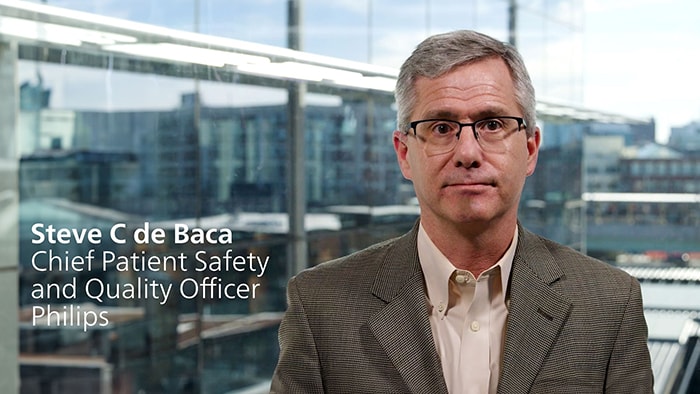The Responsibilities and Skills of a Clinical Safety Officer in Modern Healthcare Settings
The Responsibilities and Skills of a Clinical Safety Officer in Modern Healthcare Settings
Blog Article
Exactly How a Medical Security Officer Protects Both Clients and Medical Care Carriers
The function of a Clinical Safety Officer is pivotal in ensuring a protected health care environment, where both service providers and patients can grow. By methodically evaluating threats and setting up extensive safety and security protocols, these professionals not just improve client care yet additionally protect health care workers from possible responsibilities. Their dedication to training and promoting collective interaction amongst staff prepares for a culture of safety. Nonetheless, the complexities of their responsibilities typically reveal deeper implications for healthcare systems. What are the untold challenges and successes that shape this crucial duty?
Role of the Medical Security Officer
The function of the Professional Security Officer (CSO) is integral to ensuring individual security and mitigating risks within health care settings. The CSO acts as a critical figure in the development and implementation of safety methods and methods, concentrating on both operational and scientific elements. By advertising a society of security, the CSO proactively engages with health care experts to improve recognition of prospective risks and encourage adherence to developed safety criteria.
In enhancement to oversight obligations, the CSO is associated with enlightening personnel on ideal practices connected to client safety and security. This consists of assisting in training sessions, workshops, and recurring specialist development opportunities targeted at cultivating an aggressive technique to safety. The CSO also teams up with interdisciplinary teams to check out occurrences, assess information, and identify fads that may suggest underlying problems.

Threat Evaluation and Management
Effective risk analysis and management are fundamental parts of the Clinical Safety and security Officer's responsibilities. This procedure involves determining possible hazards that could endanger client safety and security or interfere with medical care procedures. The Clinical Security Police officer uses methodical techniques to review risks associated with scientific methods, devices, and environmental elements within medical care setups.
A complete danger assessment begins with data collection and evaluation, consisting of incident records, client comments, and conformity audits. This info acts as a structure for determining trends and focusing on locations requiring treatment. Once dangers have actually been examined, the Scientific Safety and security Police officer collaborates with multidisciplinary groups to develop and implement threat monitoring methods intended at reducing determined dangers.
Furthermore, recurring surveillance and analysis are necessary to make certain that risk administration steps are effective. The Professional Safety Policeman frequently evaluates incident information and safety and security efficiency indications, readjusting strategies as needed to adapt to transforming situations within the medical care setting. Clinical safety officer. By promoting a society of safety and security that encourages reporting and transparency, the Scientific Safety Officer plays a pivotal role in lessening threats and enhancing the general high quality of care, therefore shielding both individuals and healthcare suppliers
Implementing Safety And Security Procedures
Executing safety methods is essential for making certain a constant strategy to individual treatment and reducing prospective dangers in health care settings. A Scientific Safety and security Officer plays a critical role in the advancement and execution of these go to these guys protocols, which are developed to address numerous elements of person safety, consisting of medication management, infection control, and emergency action procedures.
To successfully implement safety and security methods, the Clinical Safety and security Policeman teams up with interdisciplinary groups to customize guidelines that are evidence-based and reflective of ideal practices. This entails examining existing procedures, determining locations for renovation, and integrating feedback from doctor and individuals alike. Furthermore, the police officer has to guarantee that protocols straighten with regulatory demands and accreditation requirements.
The Clinical Safety Policeman establishes metrics to evaluate adherence and reviews end results, offering data-driven understandings to inform future protocol modifications. By cultivating open communication and motivating coverage of security events, the Medical Security Officer aids to produce an atmosphere where both patients and suppliers really feel protected, inevitably boosting the total high quality of treatment.
Training and Education Campaigns
A Professional Security Police officer's dedication to ongoing training and education initiatives is essential Learn More Here for growing an educated medical care labor force furnished to promote patient safety and security requirements. These efforts are designed to maintain medical care experts educated regarding the current safety methods, technologies, and regulative needs, consequently boosting their capability to provide safe and effective care.
Educating programs typically incorporate a range of topics, including danger management strategies, incident reporting procedures, and the importance of sticking to evidence-based guidelines - Clinical safety officer. By engaging staff in simulations and study, Professional Security Police officers can create realistic situations that permit doctor to practice their responses to prospective safety problems, strengthening their skills and self-confidence
Moreover, education and learning efforts emphasize the importance of a society of security within the organization. By advertising open communication and encouraging team to voice worries without anxiety of scolding, Scientific Safety Policemans assist produce an atmosphere where continuous knowing is valued. Eventually, detailed training and education and learning not just encourage medical care specialists yet likewise contribute significantly to lowering unfavorable occasions and boosting overall client results, solidifying the important duty of Medical Safety and security Police officers in fostering a more secure healthcare atmosphere.
Enhancing Communication and Collaboration
The foundation of a risk-free health care environment is developed on robust interaction and partnership among health care specialists. Professional Security Policemans (CSOs) play a vital function in cultivating these essential components within healthcare anchor settings. By promoting open dialogue and interdisciplinary teamwork, CSOs make certain that crucial information pertaining to client safety and security, finest practices, and prospective risks is properly shared amongst all personnel.
To improve communication, CSOs implement organized communication procedures, such as standardized handoff procedures and normal safety rundowns. These practices not only lessen the opportunities of misconceptions yet additionally encourage personnel to voice concerns and share insights that can bring about improved patient results. Furthermore, CSOs help with joint meetings that bring together varied health care teams to review safety and security problems, enabling collective analytic and development.
Furthermore, CSOs leverage innovation, such as electronic health records and protected messaging systems, to simplify details flow and make sure all companies have access to updated individual data. By promoting a culture of transparency and responsibility, Scientific Security Police officers not only protect clients but also support doctor in supplying reliable and secure care, ultimately enhancing the total medical care experience for all stakeholders entailed.
Verdict

The function of the Medical Safety Policeman (CSO) is essential to making sure client safety and security and mitigating threats within healthcare setups - Clinical safety officer. By advertising a culture of safety, the CSO proactively engages with healthcare experts to boost awareness of potential threats and encourage adherence to established security standards
The Professional Security Officer on a regular basis assesses event information and security performance signs, changing approaches as needed to adapt to changing circumstances within the medical care environment. By cultivating a culture of security that motivates reporting and transparency, the Medical Safety Policeman plays a crucial function in decreasing dangers and boosting the general top quality of treatment, consequently safeguarding both patients and health care suppliers.
Eventually, the contributions of the Professional Safety and security Police officer considerably decrease the likelihood of unfavorable occasions, ensuring greater criteria of care and safety and security within the health care system.
Report this page